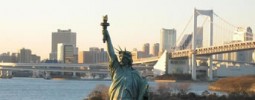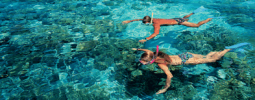Kavajë is a city in western Albania located less than a mile from the Adriatica Sea. It’s also the center of the District of Kavaj. The city of Kavaje was established in 1595 under under the name of Kavalje, it was the first city in Albania to start a anti communist revolution. In the prefecture area of Kavaje there’s 123 thousand people, the area of the country is 244 square miles, Kavaje is the capital of Kavaja Country. According to latest measurement the city has a population of 40 thousand people.
The city lies above sea level, the beach Golem has a coastline of approximately 22 miles which is also a main attraction for travelers and tourists. Across the shore is a boulevard where several large hotels and resorts are situated. The resorts include all facilities and have rooms with sea view, the beach is best described as large, with here and there a parasol to sit. In the summer months May and October you’ll find yourself in between locals coming from the capital Tirana and tourists, while other months it’s more like a private beach.
Across the shore of Kavaje several restaurants with true Albanian cuisine, which is had strong influences of Greece, Italy and the Turks. The main meal throughout Albania is lunch, don’t let at least one day pass by in Kavaje accompanied with a salad and fresh vegetables such as olives, green peppers, cucumbers, tomatoes and vinegar with salt and olive oil. The lunch should also include meat of choice. For dinner times, it’s recommended to have the seafood specialties, especially since you’re right on the shore, any restaurants in Golem en Kavaje can serve you the following Albanian dishes Durrës, Vlorë and Sarandë.
If you are an American or European citizen visiting Albania, Kavaje you do need a valid passport to enter the country. However, short vacations under 90 days do not require any type of visa. You also need to present a return to be allowed into Kavaje. Petty theft and crimes against tourists aren’t common in the city, but always make sure to look after your belongings.
Gjirokaster is one of the biggest cities in the south of Albania. It is situated in a valley between the Gjere mountains and the Drino River. Gjirokaster is built on mountainous terrain, so it has many stairs in the small streets. This has given the city the nickname City of Stairs. The city has a population of around 40 thousand people with an ethnic Greek community of about 4000 and communities of Vlachs and Roma.
Gjirokaster has a history of war and occupation, just as other cities in Albania. It was part of the Ottoman Empire, it was occupied by the Greek and in 1939 the city and whole southern region was captured by the Italians. The Greek took control again in 1940, but in 1943 the Germans came. Eventually the city returned to Albanian control in 1944. It was under control of the communistic regime until 1991. The city has an interesting intercultural mix of Albanian, Byzantine and Ottoman heritage and tradition.
Gjirokaster is actually just a museum city. Visit the Etnographic Museum and take a look at some old bazaars and Ottoman houses. Most houses are made of white and black stone. Walk up to the 11th century Gjirokaster Castle or Citadel on top of the hill. This castle and museum city overlooks the city and its surroundings. Gjirokaster has beautiful nature with the surrounding mountains.
Travelers to Gjirokaster need a valid passport. A visa is not required for short visits up to 90 days. You do need a return ticket in order to enter the country. The warmest time to visit the city is in June or July.
Saranda or Sarandë is a small city in the south of Albania on the Albanian Riviera. It is located on a horseshoe bay between mountains and the Ionean Sea. The city is also located opposite the Greek island Corfu. Saranda is named after an early Christian monastery and it has a population of 32 thousand people. The city has a Mediterranean climate with almost 300 sunny days per year.
Saranda was occupied by the Greek, Italians and Nazi Germans. It was occupied by the Italians in 1939, by the Greek in 1940 and by the Germans in 1941. The city center has communist architecture, but there are many shops and bars since the fall of communism. This gives the city a very nice Mediterranean feel. Tourists can relax at the Saranda Bay, the Butrint Lagoon and Pulbardha Beach.
Most attractions are outside the city center of Saranda. The impressive ruins of Butrint are definitely worth a visit, as well as the hypnotic Blue Eye Spring and lovely beaches at Ksamili village. Tourists can take the coastal road to Vlore or other Albanian cities. Just above the city there is the old castle of Lekures where you can get a panoramic view of the bay below, below, the inland mountains, the Lagoon and Corfu.
Travelers to Saranda need a valid passport. A visa is not necessary for short visits up to 90 days. You do need a return ticket to enter the country. As said Saranda has 300 sunny days a year.
Vlore is the second largest port in Albania and one of the oldest cities in the country. The port is located at the meeting point of the Aegean Sea and the Adriatic Sea. The city was founded by the Greeks in the 6th century BC. In the Roman Empire it became an important port. It was once known as Aulon. Nowadays the city is an important tourist place for its recreation. It has a population of around 95 thousand people.
Vlore has a history of being captured by other countries. It was also part of Serbia, Turkey, Italy and Nazi Germany. The port was a submarine base for Italy and Nazi Germany and for the Soviet Union after World War II. These days Vlore is a fishing port and holiday resort. Tourism is a major industry and the city has many hotels and beaches. The surrounding district produces petroleum, salt, oats, maize, cotton, olive oil, butter and there is lot of cattle and sheep.
You will find only concrete buildings in the center of Vlore, but lots of palm trees near the beaches. Tourists can easily relax, have a coffee and admire the beautiful view. Main sight is the building where Albanian independence was proclaimed in 1912. This is also celebrated with a bronze monument and the town center is called The Square Flag in honor of the day of independence. There is a museum of architecture in the Mosque of Muradie. To get a view over Vlora and the Ionian Sea, visit the nearby village Kanina and the old castle of Kaniné.
Travelers to Vlore need a valid passport. A visa is not required for short visits. You do need a return ticket in order to enter the city. Vlore has a Mediterranean climate with hot, dry summers in the months June, July, August and September.
Tirana (Tiranë of Tirana) is the largest city of Albania. Even with its size and the fact that it has been a city since 1614, Tirana only became the capital city in 1920. It has also undergone a major transformation through the painting of its dreary streets and buildings with brilliant colors, such as purple and orange. Tirana went through its makeover despite the fact that it is not exactly wealthy. It even went on to be called Europe’s version of New York. According to the latest measurement, the city of Tirana has a population of 620 thousand.
What makes Tirana fascinating is its rich history. You can find not only signs of communism but also Italian and Ottoman traces. Though its history is definitely noticeable during a walk around the city, you do not have to look far for ultra-modern settings such as boutiques, bars, and clubs. These are the places where you can find the hip, newly-rich Tirana crowd. You can also enjoy the mix of old and modern in the city’s theaters.
You can reach Tirana through a final stop at the Nënë Tereza International Airport. This airport is a mere 25 km away from Tirana. Within the city, you can travel by bus or by train. You have to be extra patient with the various transportation modes, however. This is because the city’s mad traffic will ultimately decide the schedule of your travel. This means that if you do not want to miss a flight, you have to leave your accommodation early. Tirana is Mediterranean in climate. The temperature can dip as low as 35 degrees Fahrenheit or rise as high as 88 degrees Fahrenheit.
If you are an American planning to visit Albania, you need to bring along your passport. However, you do not really to need to have a visa if you are visiting for a short vacation. You also need to present a return ticket to be allowed entry into Tirana.








